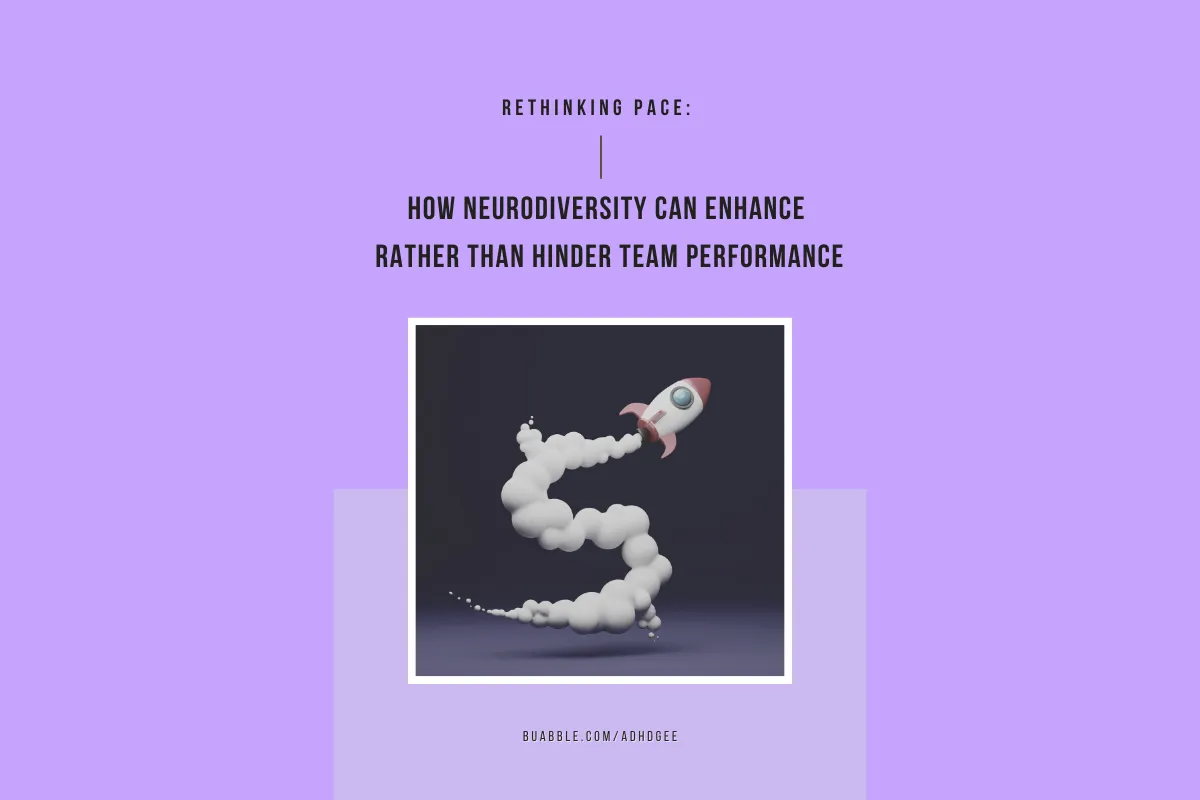
Rethinking Pace: How Neurodiversity Can Enhance Rather Than Hinder Team Performance
Rethinking Pace: How Neurodiversity Can Enhance Rather Than Hinder Team Performance
Picture this: You're in a leadership meeting where someone says, "We'd love to be more inclusive, but we can't slow down for accommodations. We need to deliver at pace." Heads nod around the table. It sounds reasonable, right?
However, here's the thing. That entire premise is built on a myth that is costing organisations their best talent and most innovative solutions.

The Speed Obsession That's Actually Slowing Us Down
Let's get real about our culture of constant urgency. Is it actually working for anyone?
The data tells a different story than the motivational posters. Burnout rates have hit 76% of employees. Mental health claims are skyrocketing. The neurotypical workforce isn't thriving under relentless pressure. They're surviving it, barely.
Meanwhile, the breakthroughs that actually matter? They don't come from rushed thinking. They emerge from minds that can see patterns others miss, persist through complex problems, and approach challenges from unexpected angles.
Sound familiar? That's exactly what neurodivergent brains do naturally.
The "Time-Consuming" Accommodation Myth
Here's what most leaders imagine when they hear "neurodiversity accommodations": endless meetings, complex protocols, and productivity grinding to a halt.
Here’s the reality: most accommodations take about as much time as ordering office supplies.
Flexible start times? That's a conversation, not a committee.
Written follow-ups to meetings? Your neurotypical team members will thank you.
Noise-canceling headphones? Less disruptive than open office chatter.
Clear project timelines? Revolutionary for everyone.
I've watched organisations implement these "accommodations" only to discover they weren't special requests, they were best practices that elevated the entire team's performance.
When "Efficiency" Becomes Inefficient
The fear that neurodiversity might hurt team efficiency reveals something fascinating about how we measure success.
We're obsessed with how fast tasks get completed, but what about how well they're executed? How often do they need to be redone? How innovative are the solutions?
Take Yasmine, a project manager with ADHD who approaches deadlines differently than her neurotypical colleagues. While others rush to meet arbitrary milestones, she maps out the entire project timeline, identifying potential bottlenecks before they derail everything.
Her team consistently delivers higher-quality work with fewer last-minute crises. Is she "efficient" by traditional speed metrics? Maybe. Is she effective? Absolutely.
The Neurodivergent Advantage You're Missing
Companies like SAP, Microsoft, and IBM didn't embrace neurodiversity out of charitable feelings. They discovered something game-changing: teams with neurodivergent members consistently outperform homogeneous teams on complex problem-solving tasks.
Why? Because cognitive diversity isn't just nice to have, it's a strategic advantage.
Pattern recognition: Autistic team members often spot inconsistencies that others miss entirely.
Hyperfocus capabilities: ADHD brains can dive deep into problems that would frustrate neurotypical minds.
Systems thinking: Many neurodivergent individuals excel at seeing the big picture and connecting seemingly unrelated concepts.
Quality focus: The attention to detail that comes naturally to many neurodivergent minds prevents costly errors downstream.
Creating Space for Self-Advocacy
Neurodivergent employees are incredibly adaptive because they've been developing workarounds their entire lives (this might be the most important sentence you read in this article!). But self-accommodation has limits, especially in rigid environments.
The magic happens when organisations create psychological safety around asking for what you need.
This means normalising requests for accommodations, not treating them as special favors. It involves building flexibility into systems from the start, rather than retrofitting rigid structures.
Most importantly, it requires leaders who see neurodiversity as untapped potential, not a challenge to manage.
The False Choice Fallacy
Here's what I want every leader to understand: You're not choosing between speed and inclusion. You're choosing between short-term rushing and sustainable high performance (and this is the second most important one!).
The organisations winning in our complex, innovation-driven economy aren't the ones moving fastest but they are the ones leveraging diverse cognitive approaches to solve problems others can't even see.
When you create environments where neurodivergent team members can work to their strengths, something remarkable happens. They don't just meet expectations, they often become your most innovative and dedicated contributors.
Redefining Success
The future doesn't belong to the fastest teams. It belongs to the teams that can think differently, adapt quickly, and solve complex problems creatively.
That future is already here for leaders wise enough to embrace it. The question isn't whether you can afford to slow down for neurodiversity, it's whether you can afford to keep missing out on the cognitive advantages that could transform your organisation.
Ready to rethink what peak performance actually looks like? Your neurodivergent team members are waiting to show you what's possible when different minds work together toward shared goals.
The competitive advantage you've been searching for might just be sitting in your next team meeting, waiting for permission to think differently.
👉 Want help making neuroinclusion a reality at your organisation? Let’s work together.
📩 Get in touch with me on [email protected]
